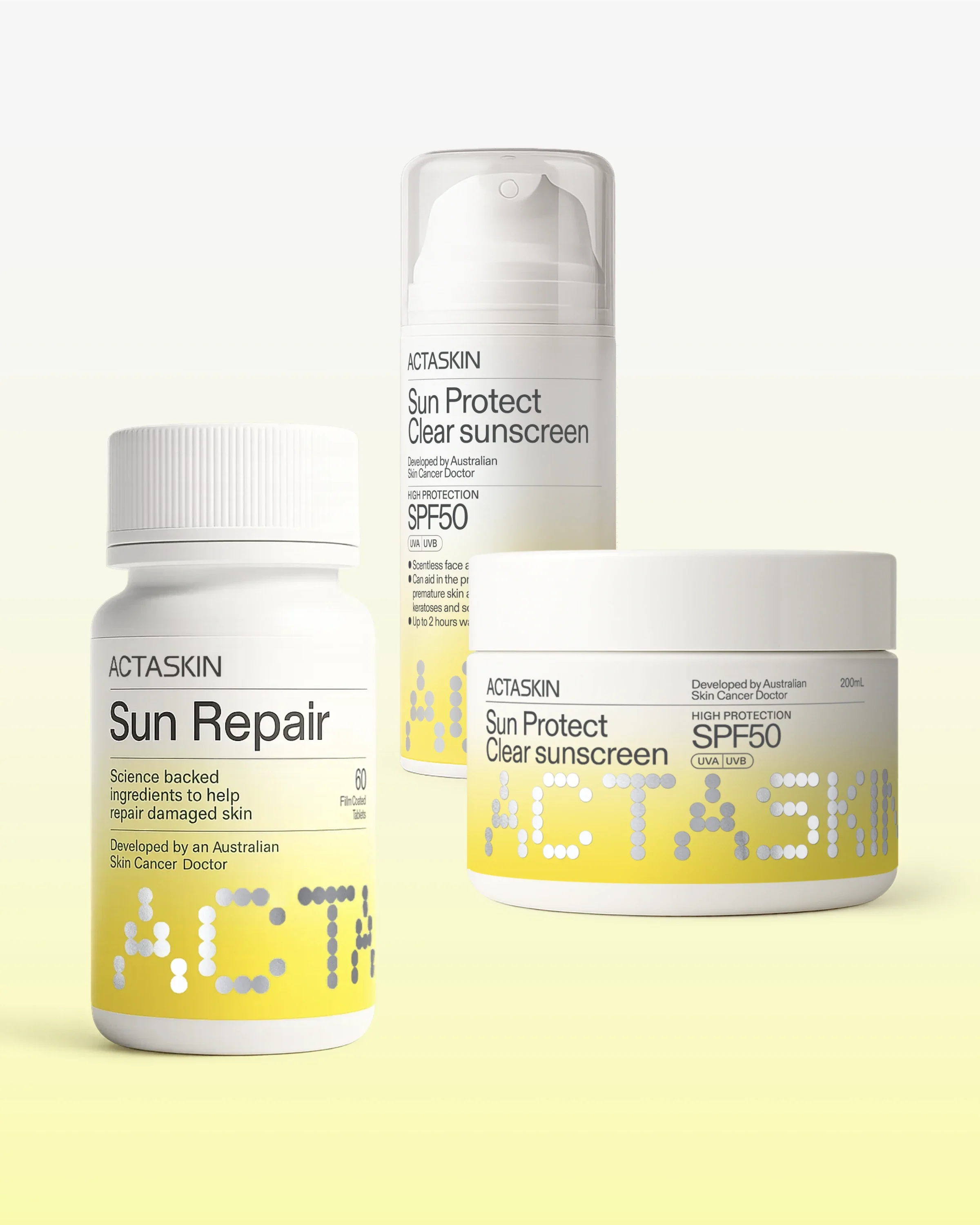“Oh well. The damage is already done.”
That sentence is heard from people getting their skin checks in every clinic in Australia. This myth is incredibly common. Skin cancer is one of the most preventable cancers and sun protection has an impact at any age. Whether you're six months old or sixty years old, it’s not about what you’ve done in the past, but what you do now to protect your skin moving forward.
Effective Protection: It’s Never Too Late
Research has shown that regular sun protection significantly reduces skin cancer risk and this applies no matter your age. The Nambour Trial (a large Australian study) showed that daily sunscreen use for adults aged 25 to 75 years old reduced their risk of squamous cell carcinoma (SCC) by 40% and their risk of melanoma by 50%.
Your skin’s not just a pretty face—it’s a fighter. And when the sun throws UV rays its way, your skin’s immune system kicks into gear to protect, repair, and bounce back.
Here is what actually happens:
Step 1: Damage Detection
When UV rays hit your skin, they mess with your DNA—especially in the top layer of skin cells (called keratinocytes). This is the kind of damage that, if left unchecked, can lead to premature ageing or skin cancer.
But your skin doesn’t just sit there. It notices the damage almost immediately.
Step 2: The Alarm Goes Off
Your skin cells sound the alarm by releasing little messenger proteins. These signals call in immune cells to assess the situation.
Some of these immune cells (like Langerhans cells) act like scouts—they pick up signs of trouble and carry them to your immune system’s “headquarters” to get a more strategic response going.
Step 3: Repair & Rebuild
Once the immune crew arrives:
- DNA repair teams try to patch things up.
- Damaged cells are told to self-destruct (yep, your body would rather kill off a broken cell than risk it turning cancerous).
- New healthy cells are made to replace the old ones.
⚠️ The Catch?
This system isn’t perfect. Too much sun, too often, and your repair crew gets overwhelmed. That’s when mistakes slip through—and those mistakes can lead to skin cancers down the track.
Daily sunscreen. Protective clothing. And Shade when you can is what you can do to start protecting your skin from now. Think of it as giving your skin the backup it needs to do its job properly. This is why it’s never too late to start, no matter how much sun damage you may have experienced in the past.



